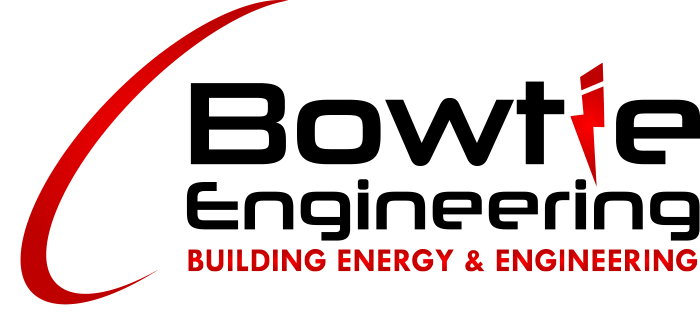BENEFITS OF READING THIS BLOG
- Gain a deeper understanding of the importance of electrical maintenance.
- Learn about potential electrical hazards in the workplace.
- Discover crucial electrical maintenance tasks for enhanced safety.
- Acquire tips and best practices for implementing electrical maintenance.
- Reduce the risk of electrical accidents and their associated costs.
- Improve workplace productivity and equipment reliability.
- Ensure compliance with safety regulations and standards.
- Enhance the overall safety culture in your organization.
Introduction
Workplace safety is a paramount concern for any organization, and electrical maintenance plays a crucial role in ensuring it. Electrical hazards can pose a significant risk to employees, equipment, and property if not managed effectively. In this article, we will delve into the importance of electrical maintenance and highlight key tasks that can enhance workplace safety. By the end of this article, you will gain a comprehensive understanding of the benefits of prioritizing electrical maintenance, learn about potential hazards, and discover essential maintenance practices to minimize risks.
Understanding Electrical Hazards
Before diving into the maintenance tasks, it’s essential to recognize common electrical hazards in the workplace. These hazards can vary widely but often include faulty wiring, overloaded circuits, damaged equipment, and inadequate grounding. Failure to identify and address these hazards can lead to electrical accidents, fires, and costly downtime.
Electrical hazards are not limited to shocks and fires; they can also result in equipment damage and loss of critical data. Understanding the potential risks associated with electrical systems is the first step in mitigating them effectively. By reading this article, you will become more aware of these dangers and how to prevent them.
Key Electrical Maintenance Tasks
-
Regular Inspection and Testing of Electrical Systems
One of the fundamental tasks in electrical maintenance is conducting regular inspections and tests of electrical systems. These assessments help identify potential issues before they escalate into hazards. Inspections can include checking for loose connections, damaged wires, and signs of wear and tear.
Routine testing of electrical components, such as circuit breakers and surge protectors, ensures that they are functioning correctly. By adhering to a maintenance schedule that includes inspections and tests, you can detect and address problems promptly, reducing the risk of accidents.
-
Proper Equipment Maintenance and Servicing
Electrical equipment and machinery require regular maintenance to remain in good working condition. Neglecting maintenance can lead to malfunctions, which may result in electrical hazards. Therefore, it is crucial to perform preventive maintenance on electrical equipment, including cleaning, lubricating, and replacing worn-out parts.
Additionally, servicing electrical systems by qualified technicians is vital. These professionals can identify and rectify issues that may not be apparent during routine inspections. Regular equipment maintenance and servicing not only enhance safety but also extend the lifespan of your electrical assets.
-
Employee Training and Awareness Programs
Employees are the frontline when it comes to workplace safety. They must be educated about electrical hazards and how to respond to them. Implementing training and awareness programs is essential to ensure that employees understand the risks associated with electricity and how to work safely.
Training programs should cover topics such as electrical safety procedures, proper use of equipment, and emergency response protocols. Regular safety drills can also help employees practice what they’ve learned and improve their ability to react effectively in the event of an electrical emergency.
-
Importance of Documentation and Record-Keeping
Maintaining records of all electrical maintenance activities is a critical aspect of safety management. Documentation serves several purposes, including tracking maintenance schedules, recording equipment inspections, and keeping a history of repairs and replacements.
Having accurate records not only helps in compliance with regulatory requirements but also provides valuable insights into the condition of your electrical systems. When issues recur frequently, it may indicate the need for more comprehensive solutions or equipment replacement.
Tips for Effective Electrical Maintenance
-
Creating a Maintenance Schedule
Consistency is key in electrical maintenance. To ensure that tasks are performed regularly, create a maintenance schedule that outlines when inspections, tests, and equipment servicing should occur. This schedule helps in planning and ensures that no essential tasks are overlooked.
-
Using the Right Tools and Equipment
The use of appropriate tools and equipment is crucial for the safety and effectiveness of electrical maintenance. Ensure that your maintenance personnel have access to the necessary tools and protective gear. Using the right equipment minimizes the risk of accidents and improves the accuracy of inspections and repairs.
-
Engaging Qualified Personnel
Electrical maintenance tasks should be carried out by qualified and trained personnel. Hiring or training individuals with the necessary expertise is essential to ensure that maintenance is conducted correctly. Qualified personnel can identify potential hazards more effectively and implement appropriate solutions.
-
Incorporating Preventive Maintenance Strategies
Preventive maintenance aims to identify and address issues before they lead to equipment failures or safety hazards. By incorporating preventive maintenance into your maintenance program, you can reduce the likelihood of accidents, minimize downtime, and extend the lifespan of electrical systems.
Reducing Risks and Enhancing Safety
Implementing effective electrical maintenance strategies brings several benefits that contribute to reducing risks and enhancing safety in the workplace.
Proactive Maintenance: Proactive maintenance helps identify and address potential issues before they escalate into hazards. This approach minimizes the chances of accidents and costly downtime, contributing to a safer working environment.
Improved Equipment Reliability: Regular maintenance ensures that electrical equipment remains reliable and operates efficiently. This reliability is crucial for preventing unexpected failures that could lead to accidents or disruptions in operations.
Compliance with Regulations: Many countries and regions have specific safety regulations and standards related to electrical systems. Adhering to these regulations is not only a legal requirement but also a means of ensuring the highest level of safety in the workplace.
Enhanced Safety Culture: Prioritizing electrical maintenance sends a clear message to employees that safety is a top priority. A strong safety culture promotes awareness, responsibility, and a collective commitment to maintaining a safe work environment.
Compliance with Regulations
In addition to implementing electrical maintenance practices, it’s crucial for organizations to ensure compliance with safety regulations and standards. Regulations vary by region, but they generally cover aspects such as equipment maintenance, electrical system design, and safety procedures. Staying up-to-date with these regulations and conducting regular audits to ensure compliance is essential.
Fostering a Safety Culture
Creating a safety-conscious work environment is a collective effort that involves everyone in the organization. Here are some strategies for fostering a safety culture:
- Promoting Safety Awareness Among Employees: Regularly communicate safety messages to employees through training sessions, newsletters, and signage. Encourage open dialogue about safety concerns and the reporting of potential hazards.
- Encouraging Reporting of Potential Hazards: Employees should feel comfortable reporting any electrical hazards they encounter. Implement a reporting system that allows employees to submit safety concerns anonymously if desired.
- Continuous Improvement in Safety Practices: Regularly review and update safety procedures and protocols to adapt to changing circumstances and new information. Encourage feedback from employees to identify areas for improvement.
Conclusion
In conclusion, electrical maintenance is a critical component of workplace safety. By implementing regular inspections, proper equipment maintenance, employee training, and compliance with regulations, organizations can reduce the risk of electrical hazards and create a safer working environment. Additionally, fostering a safety culture that prioritizes electrical safety benefits not only employees but also the overall operational efficiency of the organization. Prioritizing electrical maintenance is a proactive step towards preventing accidents, minimizing downtime, and ensuring the well-being of employees and assets.
 Skip to content
Skip to content 

